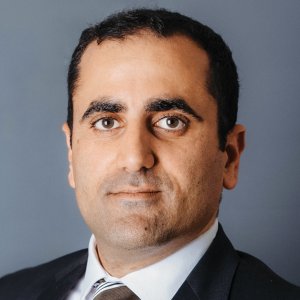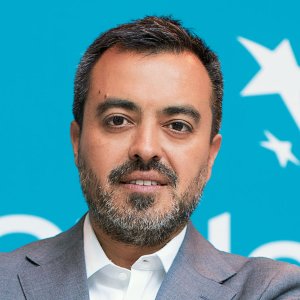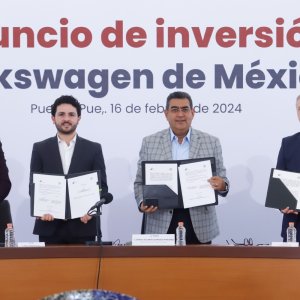Arab Countries Eye Energy Diversification, Including Renewables

STORY INLINE POST
The Middle East and North Africa (MENA) region has been known for its energy wealth, as these countries together account for 48.3 percent of the world's total oil and 38.4 percent of the world's natural gas reserves. However, these resources are non-renewable and their prices can fluctuate widely and rapidly. These factors, along with the significant energy demand in these markets, have prompted Arab countries to implement energy diversification initiatives, allowing large-scale deployment of renewable technologies in the region.
In terms of renewable energies, Arab countries have a high potential for wind and solar projects, as the natural conditions are favorable for their development since most of them benefit from one of the highest levels of solar insolation in the world. Since 2014, most Arab countries have increased their interest in renewable energy sources, especially wind and solar power generation, to cover their significant energy consumption.
Regarding their energy consumption, the demand in the region is growing at a CAGR of 6.8 percent, while the world consumption rate is at a CAGR of 2.3 percent, so the region is about three times higher than the world average growth rate.
These important energy demands in Arab countries result from the high rates of economic development recorded in recent years, along with annual population growth at 2 percent, the significant investments in infrastructure as well as the growth in the construction and transport sectors.
Energy diversification toward renewable energies is, therefore, key to the region and its current energy needs. Indeed, Arab countries have set targets within their national development agendas. Countries such as Djibouti, Morocco, Jordan, Algeria, Egypt, Saudi Arabia and the United Arab Emirates have announced they will target between 20% and 50% renewable power by 2030.
To achieve those goals in renewables, Arab countries have allocated significant resources to clean energy projects. We can observe that in 2015, the Middle East and North Africa investments for these projects totaled US$1.422 billion and by 2020 these investments amounted to US$104 billion, representing remarkable growth in just five years. Renewable energy projects in countries such as Egypt and Morocco in North Africa have become noteworthy and, among the member countries of the Gulf Cooperation Council, it is the efforts of the United Arab Emirates and Saudi Arabia that stand out among the leading players in the region.
UAE a Regional Leader
Renewable energy in the United Arab Emirates (UAE) is a central component for the country’s economic diversification strategy. By 2030, the UAE aims to meet 30 percent of its energy needs from renewable energies. Toward that goal, its clean infrastructure for renewables has increased in recent years.
UAE has invested in such projects since 2011, allocating US$765 million for the Abu Dhabi Shams 1 solar thermal power plant, which began operating in 2013, a project that made the UAE the world's third-largest producer of concentrated solar power at the end of that year.
The Shams 1 is the world's largest solar thermal power plant. The US$600 million, 2.5km2 plant can inject 100MW of electricity into the national grid, enough to power 20,000 homes and divert 175,000 tons of CO2 per year from the atmosphere.
Besides Shams 1, the Emirates has developed several projects, such as the Mohammed bin Rashid Al Maktoum Solar Park in Dubai, the largest single-site solar park in the world where around US$5.136 billion was invested in 2013-2020. This project was launched under the Dubai Clean Energy Strategy 2050 to increase the share of clean energy in Dubai's total energy production, reaching 7 percent by 2020, 25 percent by 2030, and 75 percent by 2050.
Another megaproject is Noor in Abu Dhabi with an installed capacity of 1,177MW and about 3.2 million solar panels, making it the "largest solar project ever built" with a US$870 million investment. With these major investments and megaprojects, the United Arab Emirates is playing a key role in the transition to clean energy in the Gulf region.
Saudi Arabia Takes Off
The Kingdom of Saudi Arabia has committed to developing renewable energy projects as part of King Salman bin Abdulaziz Al Saud’s initiative to position the country as a global player in renewable energy. The first round of projects began in 2017 with the 300MW Sakaka solar power plant project valued at US$320 million and the 400MW Dumas al-Jandal wind project with an estimated investment of $500 million. Saudi Arabia is a country whose renewable energy infrastructure is just beginning. The country expects by 2023 to have up to 10 percent of its total power generation from renewables.
Morocco a Shining Example in North Africa
In North Africa, Morocco has emerged as an international leader for its huge, world-leading solar installations. Although the country’s target was to produce 42 percent of its installed power capacity through renewable energy by 2020, it increased this to 52 percent by 2030. To achieve this goal, the projects deployed have been developed as well as becoming prominent in the region.
The country has invested US$5.8 billion in renewable energy projects, a sector that aims to create 400,000 jobs over the next 20 years.
A significant part of this investment has gone into constructing the Noor-Ouarzazate complex, the largest concentrated solar power plant in the world, which supplies electricity to 2 million Moroccans. This project represents a $3.9 billion investment, which is a world benchmark.
The country is also home to other iconic renewable energy initiatives, in solar energy, such as Ain Beni Mathar, which, with total electricity produced by the plant of 1.2 percent per year, has reached its target value, making it one of the most promising projects in Africa.
Egypt Enhancing the Role of Renewable Energy
Egypt has moved toward implementing mega solar energy production projects as part of its vision for 2030, with the goal of reaching 20 percent of renewable energy in the next two years and developing 10GW of wind and solar projects. These objectives show the importance of renewable energy for the economy and represent a time-bound commitment for the country to deploy short-term initiatives to meet the established goals.
The first solar thermal power plant was built in 2011 in Kuraymat. Besides this project, another 10MW plant has been operating in Siwa since 2015, as well as the 37km2 Benban solar park, in Egypt’s Western Desert, that was completed in 2019. In the same year, the country created 126 solar power stations across Egypt.
Egypt’s renewable energy capacity is expected to increase from 3.51GW in 2020 to 13.7GW in 2030, growing at a significant annual rate of 14.6 percent.
These efforts by the Arab countries discussed above are a clear example of the region's transition to renewable energy, which also represents another opportunity in the MENA region for Mexican companies, as this diversification of energy sources represents significant investments by governments, as well as one guideline for the economic development programs for the future of these countries.
Renewable energy represents an opportunity to change the region’s perspective on its dependence on energies like oil and gas, broadening our conception of these economies that are already emerging as global players in the transition to clean technologies. This trend also represents an individual and consumer trend driver that creates a greater demand for “green” and sustainable products in other sectors, such as food, opening up a greater number of opportunities for Mexican products to enter this category.























